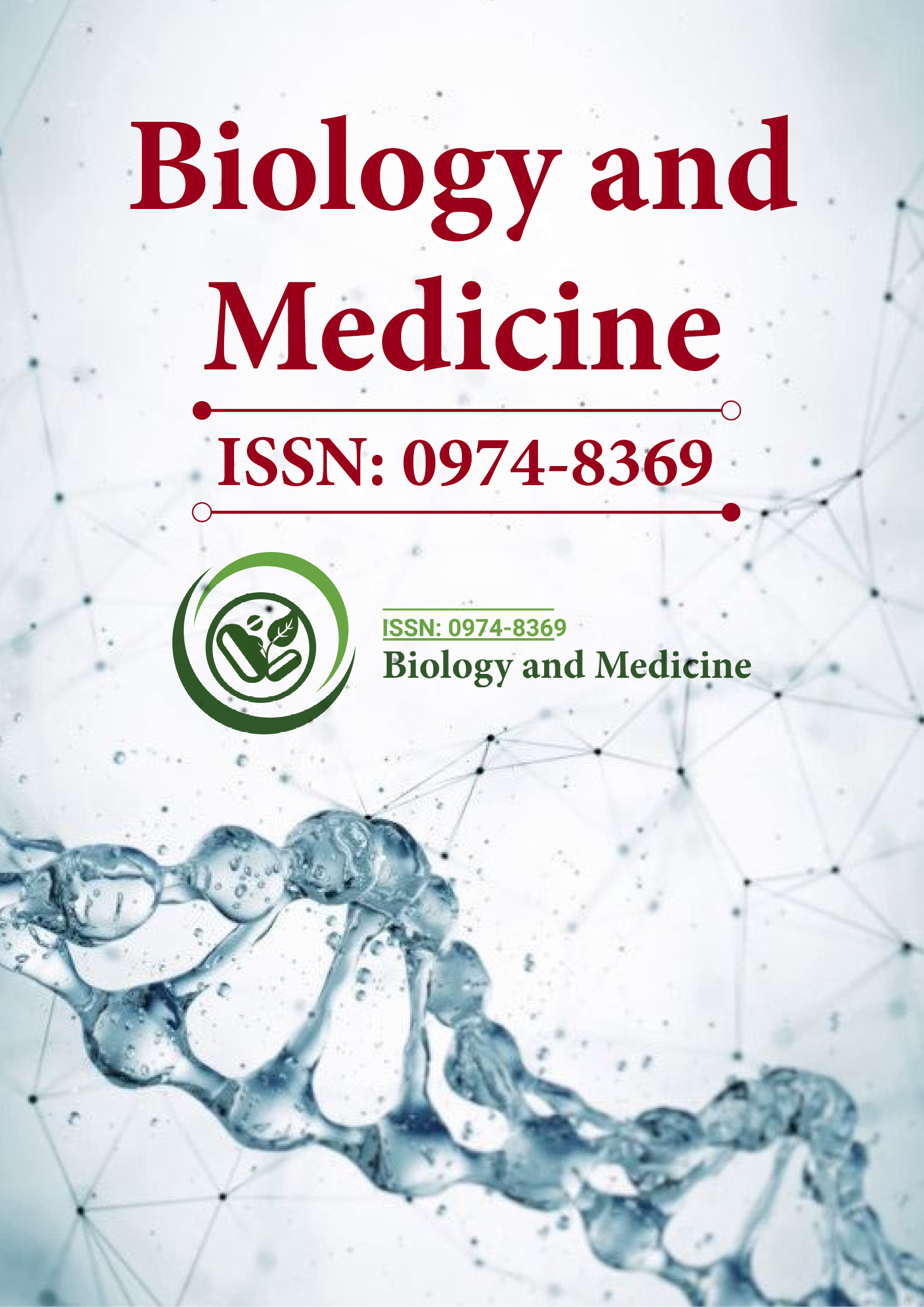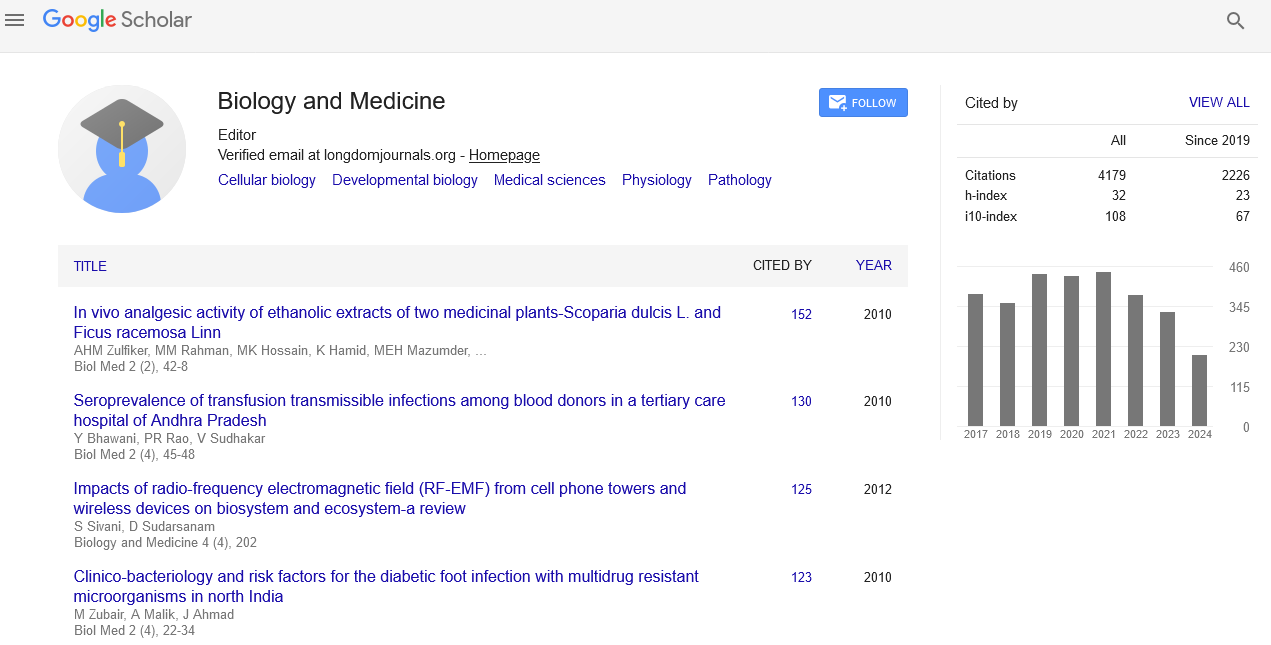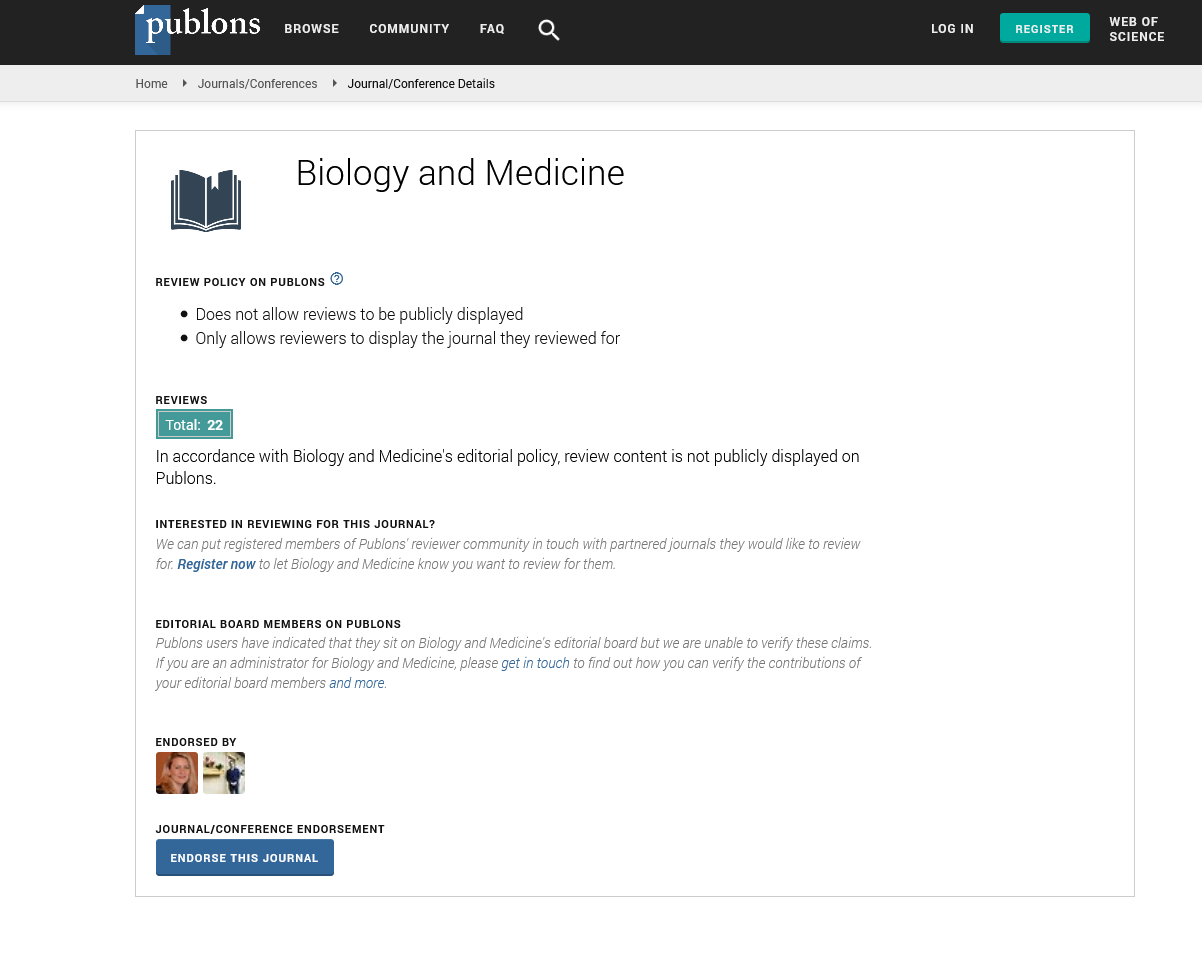Indexed In
- Open J Gate
- Genamics JournalSeek
- CiteFactor
- Cosmos IF
- Scimago
- Ulrich's Periodicals Directory
- Electronic Journals Library
- RefSeek
- Hamdard University
- EBSCO A-Z
- Directory of Abstract Indexing for Journals
- OCLC- WorldCat
- Proquest Summons
- Scholarsteer
- ROAD
- Virtual Library of Biology (vifabio)
- Publons
- Geneva Foundation for Medical Education and Research
- Google Scholar
Useful Links
Share This Page
Journal Flyer

Open Access Journals
- Agri and Aquaculture
- Biochemistry
- Bioinformatics & Systems Biology
- Business & Management
- Chemistry
- Clinical Sciences
- Engineering
- Food & Nutrition
- General Science
- Genetics & Molecular Biology
- Immunology & Microbiology
- Medical Sciences
- Neuroscience & Psychology
- Nursing & Health Care
- Pharmaceutical Sciences
Commentary - (2025) Volume 17, Issue 3
Human Virome: Viruses That Live in Us Without Causing Disease
Omar DesaiReceived: 12-Feb-2025, Manuscript No. BLM-25-28807; Editor assigned: 14-Feb-2025, Pre QC No. BLM-25-28807 (PQ); Reviewed: 28-Feb-2025, QC No. BLM-25-28807; Revised: 07-Mar-2025, Manuscript No. BLM-25-28807 (R); Published: 17-Mar-2025, DOI: 10.35248/0974-8369.25.17.780
Description
The human body is not only home to trillions of bacteria, fungi, and other microorganisms, but it also hosts a wide variety of viruses. Traditionally, viruses have been seen as harmful invaders, responsible for diseases ranging from the common cold to cancer. However, emerging research is reshaping our understanding of viruses, showing that many of the viruses in our body coexist with us in a symbiotic relationship, without causing harm. This human virome consists of a broad range of viruses that live in and on our bodies, including bacteriophages, which target bacteria, as well as human viruses that infect human cells. Most of these viruses are not associated with disease, and some may even contribute to immune regulation, microbial balance, and disease resistance.
Recent studies have begun to uncover the diversity of viruses in different body sites, their interactions with the human immune system, and their potential roles in both health and disease. Understanding the human virome may lead to new insights into microbial ecology, autoimmune diseases, cancer, and even the development of novel therapeutic approaches.
The human virome refers to the collection of viruses present in and on the human body. It is a dynamic and complex ecosystem that varies between individuals and can be influenced by factors such as age, diet, lifestyle, and environmental exposures. These are viruses that persist in the human body without causing disease. Many of these viruses are thought to live in a mutualistic relationship with their host, contributing to immune system regulation, microbial balance, and even providing protection against pathogenic viruses or bacteria. Examples of commensal viruses include:
Viruses that infect bacteria, particularly those in the gut microbiome. Bacteriophages are believed to play a crucial role in maintaining the balance of bacterial populations and preventing pathogenic overgrowth.
These are ancient viruses that have integrated their genetic material into the human genome over millions of years. While many ERVs are dormant and do not cause disease, they may play a role in immune system function and even influence the development of certain diseases. These are viruses that can potentially cause illness, but in some individuals, they remain asymptomatic or cause only mild symptoms. For example, the human herpesvirus (such as HSV-1 and HSV-2), Human Papillomavirus (HPV), and human adenoviruses can be carried asymptomatically by healthy individuals but may cause disease under certain conditions, such as immune suppression.
Interestingly, the presence of these viruses does not always result in disease. Latent infections are common, where the virus remains dormant within the body and is controlled by the immune system. This balance between latent infection and immune control is central to understanding the virome's role in health.
One of the most exciting aspects of the human virome is its potential influence on immune system regulation. Recent studies have suggested that the interactions between commensal viruses and the immune system may help to maintain immune homeostasis, preventing autoimmune diseases and ensuring an appropriate response to infections. For example, bacteriophages in the gut microbiome are believed to modulate the immune system by influencing the Gut-Associated Lymphoid Tissue (GALT), a critical component of the immune system. These viruses may interact with immune cells, such as dendritic cells and T-cells, helping to fine-tune immune responses to pathogens and prevent excessive inflammation.
Additionally, viruses in the virome may act as a first line of defense against new, pathogenic infections. By priming the immune system with harmless viral encounters, the body may be better prepared to respond to harmful pathogens. While viruses are often associated with disease, some commensal viruses may offer protection against other, more harmful pathogens. Bacteriophages, for example, can target pathogenic bacteria, preventing them from colonizing the body or causing infection. In the gut, certain bacteriophages specifically target Clostridium difficile, a dangerous pathogen that can cause severe intestinal disease, helping to limit its growth and maintain a balanced microbiome.
Some viruses may also protect against oncogenic viruses (viruses that cause cancer), such as the Human Papillomavirus (HPV), by preventing their replication or reducing their ability to induce cancerous transformations. This protective role is especially relevant in the context of immunocompromised individuals, who may be more susceptible to viral infections and associated diseases. The human gut virome, in particular, has been shown to play a crucial role in the regulation of gut microbiota. The presence of bacteriophages helps to maintain a healthy balance between beneficial and harmful bacteria. These viruses selectively target specific bacterial species, preventing the overgrowth of pathogenic microbes and promoting the diversity of the microbiome.
This balance is important for overall gut health, digestion, and even mental health, as the gut-brain axis is heavily influenced by microbial interactions. Disruptions in the gut virome may be linked to conditions such as irritable bowel syndrome, inflammatory bowel disease, and even obesity.
While many viruses in the human virome coexist harmlessly, others can contribute to the development of chronic diseases and cancer. For instance:
Certain oncogenic viruses have been linked to the development of cancer. For example, Human Papillomavirus (HPV) is well known for its role in causing cervical cancer, as well as other cancers of the anogenital region, head, and neck. Similarly, hepatitis B and hepatitis C viruses can lead to liver cancer. However, the exact mechanisms by which the virome contributes to cancer are still not fully understood. It is possible that the interaction between commensal viruses, host immune responses, and other environmental factors creates a favorable environment for the development of malignancies.
There is growing evidence suggesting that disturbances in the virome may contribute to autoimmune diseases, such as multiple sclerosis (MS) and rheumatoid arthritis (RA). These diseases occur when the immune system mistakenly attacks the body’s own tissues. The presence of certain viruses, or a disrupted balance of viruses in the body, may trigger or exacerbate immune system dysfunction, leading to autoimmune responses. The human virome's role in modulating immune responses is complex and still under investigation. However, there is the potential to harness the virome for the development of new therapeutic strategies to prevent or treat autoimmune conditions.
The human virome represents a largely unexplored area of medical research, with significant potential for therapeutic applications. Future research will likely focus on:
- Manipulating the virome to treat or prevent disease, such as introducing specific bacteriophages to target harmful bacteria or utilizing viruses to modulate immune responses.
- Virome-based diagnostics, including the use of viral biomarkers to detect early signs of infection, autoimmune diseases, or cancer.
- Restoring a balanced virome in individuals with microbiome or virome imbalances, potentially offering novel treatments for diseases related to viral dysbiosis.
Incorporating the virome into personalized medicine could allow for targeted therapies that take into account the unique viral composition of an individual’s body, leading to more effective treatments with fewer side effects.
Conclusion
The human virome is a fascinating and dynamic ecosystem of viruses that live in harmony with us without necessarily causing disease. These viruses may play crucial roles in immune regulation, microbial balance, and protection against pathogens. While much remains to be discovered, research into the virome offers exciting possibilities for improving health, disease prevention, and the development of novel therapies. Understanding the virome’s complexity and its interactions with the human body will be key to unlocking new medical breakthroughs and shaping the future of medicine.
Citation: Desai O (2025). Synthetic Biology and the Creation of Artificial Life. Bio Med. 17:780
Copyright: © 2025 Desai O. This is an open-access article distributed under the terms of the Creative Commons Attribution License, which permits unrestricted use, distribution and reproduction in any medium, provided the original author and source are credited.


